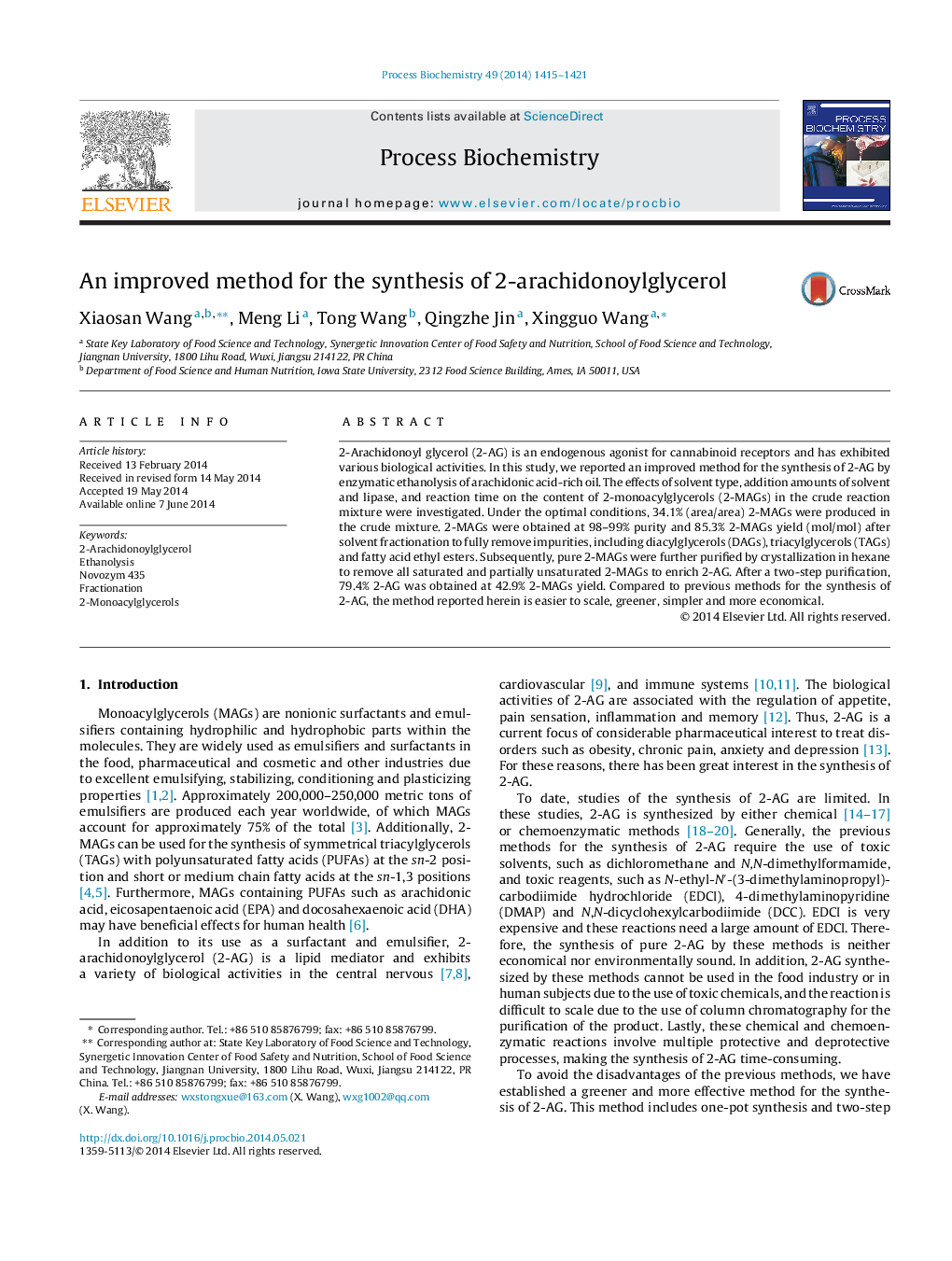| Article ID | Journal | Published Year | Pages | File Type |
|---|---|---|---|---|
| 34649 | Process Biochemistry | 2014 | 7 Pages |
•It is the first time to use lipase to synthesize 2-arachidonoylglycerol.•Our method is scalable and more economical compared to previous methods.•Effect of solvent type on acyl migration and selectivity of lipase is studied.•Crystallization is used in this study rather than column chromatography.
2-Arachidonoyl glycerol (2-AG) is an endogenous agonist for cannabinoid receptors and has exhibited various biological activities. In this study, we reported an improved method for the synthesis of 2-AG by enzymatic ethanolysis of arachidonic acid-rich oil. The effects of solvent type, addition amounts of solvent and lipase, and reaction time on the content of 2-monoacylglycerols (2-MAGs) in the crude reaction mixture were investigated. Under the optimal conditions, 34.1% (area/area) 2-MAGs were produced in the crude mixture. 2-MAGs were obtained at 98–99% purity and 85.3% 2-MAGs yield (mol/mol) after solvent fractionation to fully remove impurities, including diacylglycerols (DAGs), triacylglycerols (TAGs) and fatty acid ethyl esters. Subsequently, pure 2-MAGs were further purified by crystallization in hexane to remove all saturated and partially unsaturated 2-MAGs to enrich 2-AG. After a two-step purification, 79.4% 2-AG was obtained at 42.9% 2-MAGs yield. Compared to previous methods for the synthesis of 2-AG, the method reported herein is easier to scale, greener, simpler and more economical.
